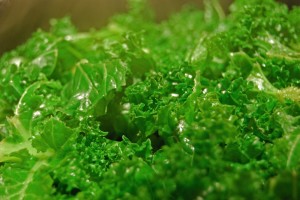New Year, New You: Part 2 | Skip the Sugar

Geri Wohl, CNC
Better Eating Coach
Written By: Geri Wohl, CNC
www.bettereatingcoach.com
Fat doesn’t make you fat. Sugar makes us fat. Are you addicted to sugar? If you are, fear not—we’re born to like sugar in order to survive. Think about the foods you are eating. Are most of them some type of carbohydrate—bread, crackers, fruit, snack bars or pasta? Carbohydrates by definition are foods that break down into sugars. The body requires this quick energy source for the cells and the brain to function properly. However, when we consume too much sugar, our finely tuned bodies have to decide what to do with the excess roaming around in our bloodstreams. Unfortunately, excess sugar ends up as love handles around our waist and bellies in the form of FAT!
The statistics are overwhelming. Our country is in the throes of an obesity epidemic. 65% of Americans are overweight and 27% are clinically obese. And the numbers are only rising! Our sugar consumption has risen exponentially. In the 1700’s, the average person consumed 4 lbs. of sugar/year. In 2009, more than 50% of Americans were eating ½ lb. of sugar/day or about 180 lbs. of sugar/year. All this excess sugar results in higher numbers on the scale and a greater risk of heart disease, diabetes, stroke and cancer. In addition, sugar suppresses the immune system and can contribute to depression. Curbing sugar consumption is key to lower weight and healthier bodies.
In order to better visualize, every 4 grams of sugar equals 1 teaspoon of sugar. The sugar numbers add up quickly. The American Heart Association (AHA) recommends no more than 9 teaspoons of sugar/day (36 grams) for men and 6 teaspoons (24 grams) for women. Children should have less due to their smaller body size.
Sugar in all its forms is typically found in packaged and processed foods. In addition, many of our favorite beverages contain unnecessary sugars. Let’s start with sodas. We all may have heard that soda is bad for you. But do you realize that a 12 oz. can of Coke has almost 10 teaspoons of sugar? That’s more than the recommended amount of sugar for the entire day. Maybe you think that the lighter color sodas have less sugar. Wrong—a 12 oz. can of Sprite has about the same amount of sugar as that can of Coke. Cut the soda. If you absolutely need the bubbles, try flavored carbonated water. Or drink water flavored with lemon or lime. Don’t grab for the artificially sweetened sodas instead. The artificial sweeteners don’t have the calories, but they taste as sweet if not sweeter than regular sugar. The body receives signals to release insulin due to the sweetness and when no sugar is present, we must still deal with the released insulin. The result is extra fat being stored.
Next, we have the sugars in juices. The typical American breakfast starts with a glass of OJ. You may be surprised but that glass has 6 ½ teaspoons of sugar, even more than a frosted pop tart, which has only 3 ½ teaspoons. Even if juice is labeled 100% pure juice, the lack of fiber will cause blood sugar surges resulting in juice acting similarly to sodas in regards to insulin production. Let’s not forget about our favorite sports drink. After the positive effects of exercise, Gatorade and the like with their high levels of sugar negate all your hard work. Try having water flavored with lemon or lime, coconut water or various teas. Green tea has powerful antioxidants that have been associated with inhibiting cancer growth. See my article, “Tea Time,” for more about tea.
Here is a sampling of sugar quantities in juices and sport drinks:
Other strategies to employ to cut down on sugar:
 Add more fiber to your meals. The result is a lowering of blood glucose (sugar) two hours after eating. Fiber also has positive effects on LDL or bad cholesterol. Fiber is found in many vegetables, fruits and legumes. For more about fiber, see my article, “It’s Good To Be Green.”
Add more fiber to your meals. The result is a lowering of blood glucose (sugar) two hours after eating. Fiber also has positive effects on LDL or bad cholesterol. Fiber is found in many vegetables, fruits and legumes. For more about fiber, see my article, “It’s Good To Be Green.”- Eat more protein with carbohydrate-heavy foods. Protein will help to normalize blood sugar spikes reducing the likelihood of excess insulin being released.
- Reduce the quantity of high sugar foods consumed. Sugar hides in many common foods we eat. By choosing products that have less sugar, you can cut unwanted calories quickly. You may be able to reduce sugar amounts by half simply by choosing foods with half the sugar. Take yogurt for example. A 6 oz. flavored yogurt contains 26 grams of sugar. Choosing a plain yogurt has about 9 grams of sugar and then flavor it with nuts, flax seed and some fresh fruit. The sugar count will drop significantly and it will be more nutritious. If you are addicted to sodas, going cold turkey may be difficult. Try cutting out one can per week until you have reduced your intake. For juices, you can dilute until your taste buds have been retrained to like less sugary foods.
- Incorporate weight training into your day. Blood sugar is reduced by about 15% for more than 12 hours after a workout. Instead of storing excess glucose as fat, the body moves it to muscle for future use. This effect also has been observed with aerobic exercise.
- Drink lots of water with cinnamon. Studies have shown that just ½ teaspoon of cinnamon per day reduces blood sugar levels by almost 30% and lowers cholesterol and triglyceride levels.
- Read food labels. Be aware of what manufacturers are putting into the food you eat.
Removing sugar from the diet is very challenging. Take it slowly and you’ll notice that over time, your cravings for sugar will be reduced. Please contact me on my website at www.bettereatingcoach.com for guidance in meeting your nutritional goals.
© Geri Wohl, CNC










